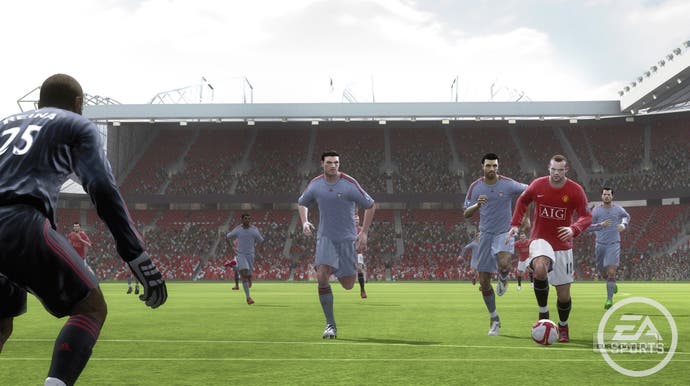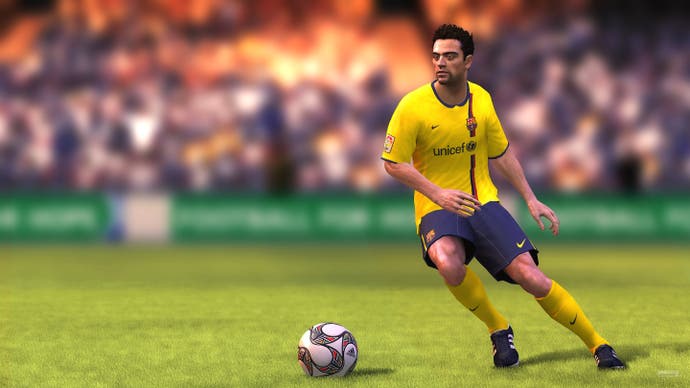FIFA 10
Kicking our way through EA Canada.
"I think that the big problem," says Paterson, "is that if you want to make one feature better, it means that another feature has to react to that, and it has to react to that in a sensible fashion. If we make the shooting system realistic, the CPU has to learn how to shoot. And so you can see how these things have knock-on effects." More importantly, it looks like EA can see where they do, because for every concession to attacking verve there's a logical counterpoint. In Gerrard's case, for example, he will need the ball in a particular position to hit a screamer. Everything else introduces error - the pace of his shot, his angle of approach, the physical proximity of defenders, even the weather conditions. The increased role of error is particularly evident in heading. Up front, tall players like Peter Crouch and Luca Toni continue to win a lot of headers, but they won't guide them all into the net as they so often did in FIFA 09.
As Paterson says, the implications quickly snowball, but often in positive ways. Defending corners is no longer a question of hitting the pass button to head it precisely to a friendly player, because you may be under pressure, and the ball may end up flying to an attacker on the edge of the area instead rather than triggering a counter-attack. EA wants you to use the clearance button, which pushes the ball further out but with a reduced chance of retaining possession. The net result is that you work harder to avoid conceding a corner.

A lot of these changes also reduce the potency of some of last year's exploits, assisted by a few welcome amendments to the underlying player logic. Goalkeepers last year had conflicting logic that drove them off their line just as they should have been catching a lofted ball which, combined with the lack of error on distant long-range shots, led to some embarrassing goals from the kick-off. Now they know better, and take fewer risks with balls heading towards the crossbar too, tipping them over if they're in any doubt. And besides, with error going up the harder the shot, they won't be troubled so often by cheeky punts, although the corner flags may be.
Similarly, while Custom Tactics haven't been changed dramatically, EA has tweaked the aggression and pressure sliders. "We discovered last year that people were sticking like seven players in defence," Rutter notes, referring to a particularly annoying exploit, "and having a Cristiano Ronaldo-type person up front, and what they were doing was, we had top-left bumper and through-ball is a chipped, lobbed pass, and you could ping a massive... just rocket it over the team, and it would land almost perfectly for a fast player who could then bear down on goal and score in a one-on-one situation." Good luck with that this year.

"Then there's balancing out the fact that those situations tended to happen if you were pushed right up," Rutter continues, "so say you'd gone up for a corner, and your team's pushed way up the pitch, there wasn't enough defensive cover, so you'd have the kind of John Terries and everyone going up for a corner if you were Chelsea, and the play would break down and as John Terry was running back Michael Essien, who had been hanging back, would be running forward to meet it, so the ball would just fly over his head." This didn't work out well. Fixed.
Perhaps most significantly, EA has adjusted sprinting. "Last year pace was king," Paterson admits. "We were in a tricky situation, because we were trying to turn the corner and convince people FIFA was legitimate, but we weren't there yet, so it was important to show that attributes made a difference. Maybe we went a little too far with sprint speed, but what we've done this year is, when the players touch the ball, their acceleration slows, and it can slow to such an extent that he slows down, so you can imagine if you draw an acceleration curve for Ronaldo, he'll accelerate [gestures a smooth curve], and he'll touch the ball [introduces a stutter in the curve], and so on."









